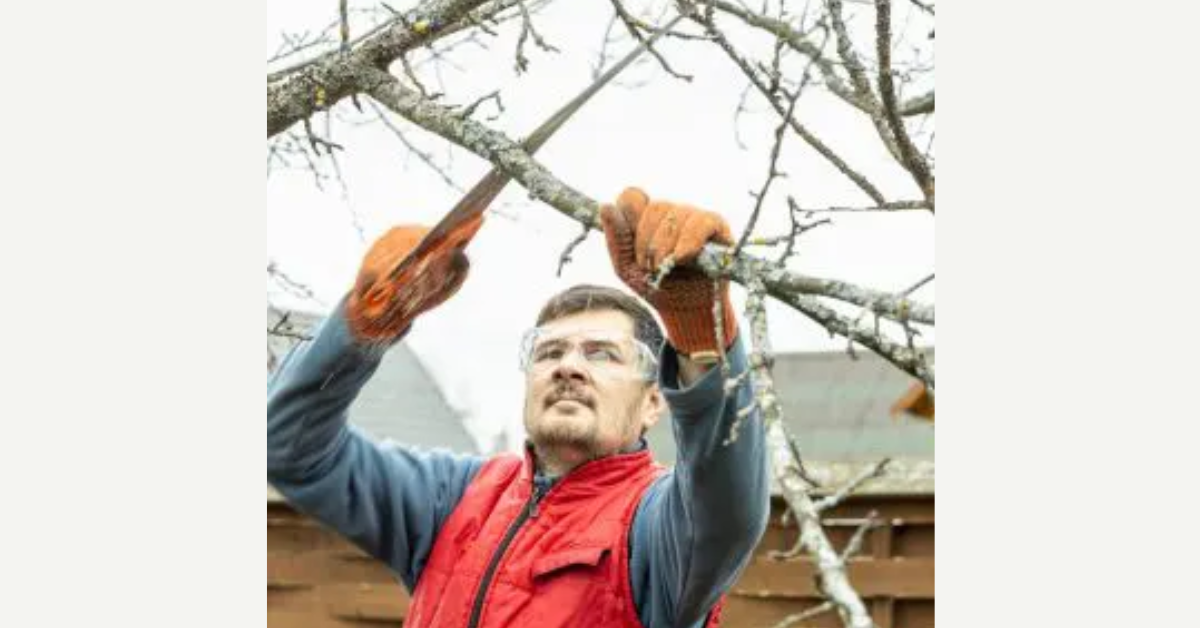Tree Pruning Services Near Me: Improve Tree Health, Safety, and Curb Appeal
If you’re searching for “Tree Pruning Services Near Me,” you likely have trees that need attention—whether they’re overgrown, damaged, or simply not thriving the way they should. Tree pruning isn’t just about trimming branches; it’s about maintaining a healthy, safe, and beautiful landscape.
In this guide, we’ll cover everything you need to know about professional tree pruning services: what they involve, why they matter, how often to schedule them, and what to look for in a qualified local provider.
What Is Tree Pruning?
Tree pruning is the selective removal of branches or limbs to improve a tree’s structure, health, and appearance. It differs from general trimming in that it’s a targeted, purposeful approach guided by an understanding of tree biology.
Effective pruning requires knowledge of how trees grow, which branches are safe to cut, and how to avoid damaging the tree long-term.
Benefits of Professional Tree Pruning Services
Pruning provides far more than aesthetic improvement. Here are key benefits of regular, expert pruning:
1. Healthier Trees
Removing diseased, infested, or dead branches helps stop the spread of decay and allows your tree to redirect nutrients to healthier parts.
2. Improved Safety
Pruning eliminates weak, cracked, or low-hanging branches that could fall during storms or high winds—protecting your family and property.
3. Enhanced Growth
By opening up the canopy, pruning improves sunlight exposure and air circulation, which boosts overall tree vitality.
4. Increased Property Value
Well-pruned trees enhance curb appeal and contribute to a polished, well-maintained landscape—potentially increasing property value.
5. Better Fruit and Flower Production
For flowering and fruit-bearing trees, pruning stimulates new growth, resulting in more abundant blooms and healthier produce.
Common Types of Tree Pruning
Professional arborists offer several types of pruning, each suited for different goals:
Crown Thinning
Removes selected inner branches to increase light penetration and air movement.
Crown Raising
Clears the lower branches to provide clearance for structures, walkways, or views.
Crown Reduction
Reduces the size of the tree canopy by cutting back outer branches. Useful for trees near buildings or power lines.
Deadwooding
Removes dead, dying, or broken branches to improve safety and appearance.
Structural Pruning
Focuses on shaping young trees to establish strong central leaders and balanced branching.
Signs You Need Tree Pruning
Here are a few indicators that it’s time to search for tree pruning services near me:
-
Branches rubbing against roofs, windows, or wires
-
Excessive leaf drop or canopy thinning
-
Dead, cracked, or hanging limbs
-
Dense, overgrown canopies blocking sunlight
-
Low-hanging branches obstructing sidewalks or driveways
-
Leaning branches or uneven growth
When Is the Best Time for Tree Pruning?
Timing matters when it comes to effective tree pruning.
-
Late winter to early spring is ideal for most trees—before new growth begins and pests are inactive.
-
Summer pruning helps correct shape and remove rapid growth.
-
Fall is typically avoided, as it can increase the risk of disease for certain species.
Different trees have different needs. A certified arborist can recommend the best timing based on species, age, and condition.
DIY Pruning vs. Professional Services
While minor branch trimming may seem like a simple weekend job, improper pruning can cause permanent damage. Here’s why hiring a professional is the better choice:
Expert Knowledge
Professionals know which cuts promote growth and which can lead to decay or disease.
Proper Equipment
Climbing gear, pruning saws, and safety tools are essential, especially for tall trees.
Efficient and Safe
Avoid the risks of falling, damaging your tree, or creating long-term problems. Arborists ensure safe, clean, and effective cuts.
Liability Coverage
Reputable companies carry insurance to protect your property and their workers during the job.
What to Expect from Local Tree Pruning Services
Searching for tree pruning services near me should lead you to providers who follow a proven process:
-
Initial Consultation
The arborist inspects your tree and recommends a pruning plan based on species, health, and location. -
Transparent Estimate
You receive a written quote covering labor, cleanup, and any special equipment. -
Scheduled Service
A trained crew arrives with tools, safety gear, and proper pruning techniques. -
Debris Removal
Branches and wood are removed or turned into mulch—leaving your yard clean and tidy. -
Follow-Up Advice
You may get recommendations for future pruning, fertilization, or pest management.
How to Choose the Best Tree Pruning Services Near You
Here are key factors to consider when selecting a local tree pruning provider:
✅ Certified Arborists
Ensure they employ certified professionals who understand tree biology and safe practices.
✅ Licensing and Insurance
Ask for proof of business licenses and liability coverage to protect your property.
✅ Local Reputation
Read online reviews and ask neighbors or community groups for recommendations.
✅ Transparent Pricing
Look for companies that offer free estimates and clear breakdowns of service costs.
✅ Cleanup Guarantee
Your yard should be left better than it was found—debris, sawdust, and branches fully removed.
Cost of Tree Pruning Services
Costs vary based on:
-
Tree size and species
-
Number of trees to be pruned
-
Accessibility (trees close to homes or wires may be harder to reach)
-
Type of pruning (crown reduction, deadwooding, etc.)
-
Travel distance if outside the provider’s normal range
On average, tree pruning services cost:
-
Small trees: $100–$300
-
Medium trees: $300–$700
-
Large trees: $700–$1,500+
Request a custom quote from a local provider for the most accurate pricing.
Environmentally Conscious Pruning
At Woods Forestry Solutions, we follow sustainable tree care practices:
-
Minimal Cutting: Only necessary limbs are removed to preserve tree health
-
Disease Prevention: Sterilized tools and proper cut techniques avoid infection
-
Debris Recycling: All trimmings are repurposed as mulch or compost
-
Tree Preservation: We prioritize pruning over removal whenever possible
Frequently Asked Questions (FAQ)
How often should trees be pruned?
Most trees benefit from pruning every 2–3 years. Fast-growing or ornamental trees may need annual attention. Dead or hazardous limbs should be removed as soon as they’re noticed.
Does pruning hurt the tree?
When done properly, pruning promotes health and growth. Over-pruning or incorrect cuts can harm a tree, which is why professional service is recommended.
What’s the difference between pruning and trimming?
Pruning is focused on health and structure, while trimming is more about aesthetics. Arborists prune with a long-term view of tree development.
Can you prune trees in winter?
Yes, winter pruning is ideal for many species. Trees are dormant, making it easier to shape the canopy and reduce disease risk.
Do I need a permit for tree pruning?
Generally, permits aren’t required for pruning. However, some cities regulate heavy pruning or work on large heritage trees—check with your local authority.
Final Thoughts
Regular, expert pruning is essential for tree health, landscape safety, and long-term property value. Whether you’re looking to clean up an overgrown tree, remove dead limbs, or shape a young sapling, hiring a local, certified professional ensures the job is done right.
At Woods Forestry Solutions, we provide reliable and skilled tree pruning services tailored to your specific tree species and property needs. If you’re searching for “tree pruning services near me,” let our experienced team help you protect and beautify your landscape.







